Featured Articles
It Was 40 Years Ago Today Ali Won That Thrilla Over Frazier in Manila
On March 8, 1971 the most anticipated sporting event in history took place. It was titled “The Fight of The Century,” between heavyweight champion “Smokin” Joe Frazier 26-0 (23) and former undisputed champ Muhammad Ali 31-0 (26).
What made the fight so compelling was the style clash between Joe and Muhammad. They were polar opposites outside of the ring regarding their personalities. In the ring, Frazier was the ultimate catch ‘n’ kill swarmer who forced the fight from bell-to-bell, opposed to Ali, who was a beautiful boxer who picked his spots sliding and gliding about the ring throwing fast and fluid accurate combinations. One’s strength was the others’ weakness and the others’ weakness was the others’ strength.
When they fought the first time, Frazier was better prepared mentally, physically and stylistically to confront Ali… more-so than any other opponent ever was to face their career nemesis and rival in history.
Frazier understood that Ali was more effective backing up and fighting when he choose to do so than he was when he was forced to back up. Ali was not ready for Frazier stylistically and had no concept how hard Frazier was to hit and keep off. Another problem Ali had was the fact that he was coming off an almost four year layoff and had only fought twice before meeting Frazier. On the other hand Joe was at his peak and always knew his worth and moment of truth would come against Ali.
Frazier won the first fight with Ali due to his unrelenting pressure and forcing Ali to fight off the ropes and out of the ring corners. Ali had his moments of brilliance during the first 10 rounds of the bout, but it was all Frazier from the 11th round on with Ali only winning round 14. Frazier sealed the deal when he dropped Muhammad with a massive left-hook that was heard around the world in the 15th round. Ali got up from the grave at the count of four but lost a unanimous decision.
A little more than two and a half years later, Ali and Frazier met again in another ‘brawler versus boxer’ confrontation when neither was champ. In between the first and second fights Ali fought 13 times as opposed to Frazier, who only fought four times. This time Ali was the fresher fighter with the more lively legs and spring. Frazier tried to force the action but Ali used his legs to dance out of range and pepper Joe from long range. Joe had his moments during the middle rounds, but Ali built a big lead and then rallied down the stretch to seal the unanimous decision in his favor.
And then there’s the third meeting between them, known as “the Thrilla In Manila.” In between the second and third bouts Ali had four fights and Frazier had two. Ali was now the undisputed champ and Frazier was still a top contender behind former champ George Foreman. The thinking by most sophisticated observers before the third meeting was this: Ali would breeze through the bout and Frazier, who was thought to be on the decline, would be target practice for Muhammad’s sharp shooting. And for two and a half, perhaps three rounds, they were right.
The Thrilla In Manila: Muhammad Ali 48-2 (35) vs. Joe Frazier 32-2 (27)
Ali came out fast and tried to jump on Frazier, who was a notorious slow starter. His thoughts were to get rid of Frazier early and not have to suffer through another long and physically taxing fight. However, Ali lacked the needed tools to punctuate the quick execution. Yes, he rocked Joe real good during the first two rounds and had him on his heels. In the third Ali landed some clean flurries, but Joe was starting to smoke and started to crash some solid left hooks and right hands to the champ’s body.
Starting in the fourth round Ali went to the ropes and tried to time Frazier on the way in. He was successful, but he didn’t disrupt Joe’s aggression and by the end of the round Frazier was finding his rhythm. During the middle rounds Ali fought off the ropes almost as if he were willing to let Frazier have his body and would look to score when he felt Frazier was reloading. Only in the seventh round did Ali attempt to use his legs and circle to the left out of Frazier’s range. And even at that Frazier was catching him because it was more natural for Joe to move forward quicker than a tiring Ali could move backwards.
By the eighth round it was apparent that it was taking too much out of Ali trying to avoid Frazier – so he went to the ropes and looked to pick his spots. The only problem was, Frazier was working him over real good to the head and body with thunderous left hooks and right hands. Actually, Ali was tired and content to lie against the ropes like he did against George Foreman a year earlier and endure the body punishment. As the rounds went on, Ali would try to strike quick early in the round but it didn’t take long for Frazier to force him to the ropes or one of the ring corners and start to work him over to the body first and then to the head. Ali’s legs had no spring and he couldn’t get away from Frazier and it looked as if Ali wasn’t going to get a second wind. If Joe could maintain his aggression without taking too many punches on the way in, he’d soon be champ again.
Starting in the 12th round, Ali began to catch Frazier with straight one-twos while waiting for him on the ropes. By this time in the fight Ali was too spent to even attempt to use his legs and fight Joe from long range. So he fought him flat-footed with his back mostly against the ropes. His saving grace turned out to be his seven inch reach advantage along with his straight punches landing on Frazier before Joe could close the distance and force Muhammad to trade hooks and uppercuts on the inside. Early in the 13th Ali knocked Frazier’s mouthpiece out as he burrowed forward. However, Joe kept forcing Muhammad to the ropes, but now Ali’s better condition and quick hands were winning him the exchanges on the inside. Early in the 14th Frazier appeared to be recovered, but he just couldn’t get out of the way of Ali’s straight lefts and rights. His face was badly swollen and he was getting hit with punches he couldn’t see.
Moments before the bell to start the 15th round, Frazier’s trainer Eddie Futch told Joe it was over and he was stopping the fight because he was getting hit with too many punches.
After the fight Frazier said, “Lawdy, lawdy, he’s a great and mighty champion. I hit him with punches that would bring down the walls of a city.” And Ali said the fight was the, “Closest thing to dying that I know of.”
When you take into account the perception of Ali and Frazier as fighters, their third fight goes against the grain. The first time they fought, the brawler wouldn’t let the boxer box, and in the rematch, the boxer boxed and didn’t allow the brawler to force the fight effectively. Well, the third bout between them was a brawl. Ali’s boxing ability was a long forgotten thought after the third round. During the “Thrilla In Manila” Muhammad Ali and Joe Frazier fought it out toe-to-toe. And a case could be made that for the only time of the three times they met, it was Ali who actually landed the harder punches during the bout.
The “Thrilla In Manila was three fights in one. Ali owned the early going, Frazier owned the middle rounds up through the 11th and then Ali came on in the 12th, 13th and 14th. But he didn’t do it boxing! No, Joe forced him to fight and brawl in Manila. And once again Ali silenced his critics by out-brawling one of the greatest brawlers in heavyweight history.
Joe Frazier won the biggest fight between he and Ali, but Ali won the biggest brawl between them. Sadly, neither was ever great again and both should’ve retired forever after Manila. But tellingly, the legacy of both men is immense and I will propose, will always endure. And neither man in ensuing decades stated that they regretted their participation in this and other classic tussles. True warriors, with legacies undeniable.
Frank Lotierzo can be contacted at GlovedFist@Gmail.com
-

 Featured Articles3 weeks ago
Featured Articles3 weeks agoThe Hauser Report: Zayas-Garcia, Pacquiao, Usyk, and the NYSAC
-
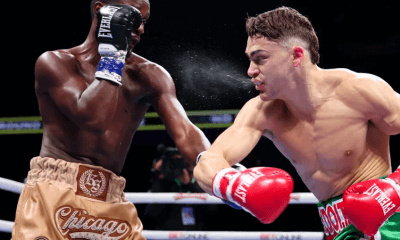
 Featured Articles2 weeks ago
Featured Articles2 weeks agoOscar Duarte and Regis Prograis Prevail on an Action-Packed Fight Card in Chicago
-
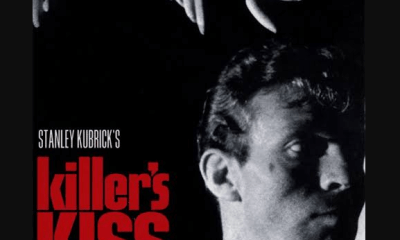
 Featured Articles1 week ago
Featured Articles1 week agoThe Hauser Report: Cinematic and Literary Notes
-
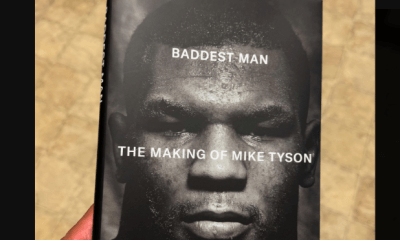
 Book Review4 days ago
Book Review4 days agoMark Kriegel’s New Book About Mike Tyson is a Must-Read
-
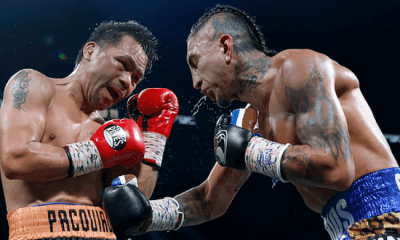
 Featured Articles4 weeks ago
Featured Articles4 weeks agoManny Pacquiao and Mario Barrios Fight to a Draw; Fundora stops Tim Tszyu
-
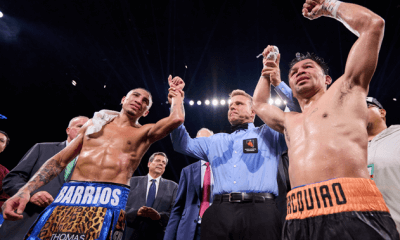
 Featured Articles4 weeks ago
Featured Articles4 weeks agoArne’s Almanac: Pacquiao-Barrios Redux
-

 Featured Articles3 weeks ago
Featured Articles3 weeks agoRemembering Dwight Muhammad Qawi (1953-2025) and his Triumphant Return to Prison
-
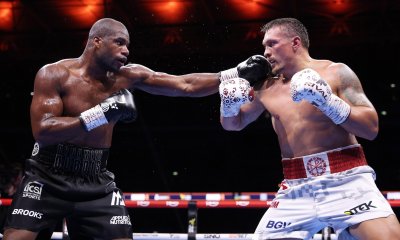
 Featured Articles4 weeks ago
Featured Articles4 weeks agoOleksandr Usyk Continues to Amaze; KOs Daniel Dubois in 5 One-Sided Rounds













